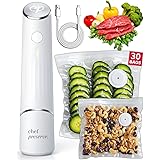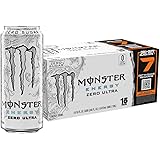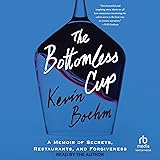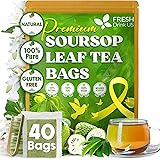We’ve all been there: standing in the grocery store aisle, squinting at the endless array of salad dressings, each promising health and flavor. Yet, a closer look at the ingredient list often reveals a disheartening truth—many popular options are laden with an unfortunate cocktail of cheap, highly processed oils, excessive refined sugars, and artificial additives. What begins as a vibrant, nourishing salad, carefully crafted with fresh greens and wholesome ingredients, can inadvertently become compromised by a dressing that undermines its very purpose.
Fortunately, as the insightful video above illustrates, transforming your salad game is not only possible but remarkably simple and quick. The secret lies in harnessing the power of your own kitchen to whip up extraordinary, healthy salad dressings. This approach not only ensures you control every ingredient, avoiding undesirable fillers, but also offers a significantly more cost-effective solution than purchasing premium clean-label alternatives.
Beyond the Bottle: Why Homemade Healthy Salad Dressings Reign Supreme
The allure of store-bought convenience is undeniable. Nevertheless, understanding the stark contrast in nutritional profiles can empower you to make more informed choices. Commercial salad dressings often rely on industrially produced seed oils such as soybean, canola, or corn oil. These oils are typically high in omega-6 fatty acids, and when consumed in disproportionate amounts relative to omega-3s, they can contribute to inflammatory responses in the body. Furthermore, the extensive processing these oils undergo, often involving high heat and chemical solvents, can degrade their nutritional integrity and create undesirable compounds.
Moreover, the ubiquitous presence of processed white sugar or high-fructose corn syrup in many bottled dressings is a significant concern. These added sugars contribute empty calories, spike blood glucose levels, and can exacerbate various health issues. Opting for homemade means you can choose natural sweeteners like honey or maple syrup, or even eliminate added sugars entirely, letting the inherent flavors of your ingredients shine.
The financial benefit is also compelling. While a healthy, clean-ingredient dressing might cost a premium at the supermarket, the raw materials for a homemade version are typically far more economical per serving. Creating your own homemade salad dressings allows for ingredient customization, catering to specific dietary needs, allergies, or simply personal taste preferences. This control is invaluable for anyone committed to a truly holistic and nutritious eating plan.
Crafting Nutritious Dressings at Home: Essential Components and Techniques
At the heart of any exceptional dressing lies a balance of fat, acid, salt, and flavor. Mastering these elements empowers you to create an endless array of delicious combinations. The video demonstrates six distinct approaches, each highlighting different flavor profiles and ingredient bases. Let’s delve deeper into the foundational principles that make these recipes so effective.
The Art of Emulsification
Many dressings involve emulsification, the process of blending two immiscible liquids (like oil and vinegar) into a stable mixture. Dijon mustard, often featured in these recipes, is an excellent natural emulsifier due to its mucilage content. When you vigorously shake ingredients in a sealed jar or use an immersion blender, you’re helping the fat molecules disperse evenly throughout the acidic liquid, creating a cohesive, creamy texture. This technique ensures that your dressing clings beautifully to your salad ingredients rather than separating into oily and watery layers.
Ingredient Spotlights for Superior Flavor and Health
- High-Quality Oils: The recipes predominantly feature extra virgin olive oil and avocado oil. Extra virgin olive oil, a cornerstone of the Mediterranean diet, is rich in monounsaturated fats and powerful antioxidants called polyphenols, which contribute to heart health and inflammation reduction. Avocado oil, with its mild flavor and high smoke point, is another excellent choice, providing healthy monounsaturated fats and Vitamin E. Prioritizing these unrefined, nutrient-dense oils is a fundamental step toward healthier dressings.
- Natural Sweeteners: Instead of refined sugar, the dressings employ honey and maple syrup. These natural alternatives offer subtle sweetness along with trace minerals and antioxidants, providing a more complex flavor profile than simple sugar.
- Fresh Herbs & Citrus: The vibrant flavors of basil, cilantro, parsley, dill, lemon, lime, and orange not only elevate taste but also infuse dressings with vitamins, minerals, and potent plant compounds. The acidity from citrus juices and vinegars is crucial for balancing richness and brightening flavors.
- Creamy Bases: Unsweetened plain Greek yogurt provides a protein-rich, probiotic-friendly base for creamy dressings, offering a tangy counterpoint. Mayonnaise, when made with healthy oils or chosen carefully, adds richness and a smooth texture.
Deconstructing the Six Featured Healthy Salad Dressing Recipes
The video provides a fantastic starting point with a diverse collection of salad dressing recipes. Let’s explore each one with expanded insights, focusing on their unique characteristics and optimal applications.
1. Lemon Poppy Seed Dressing: Bright and Zesty
This light, zesty dressing, created in under five minutes, offers a delightful tang and a textural crunch from the poppy seeds. The high proportion of lemon juice contributes a significant amount of Vitamin C and makes it incredibly refreshing. For those who prefer a less acidic profile, reducing the lemon juice by half, as suggested, will yield a creamier consistency while still delivering bright notes. This dressing is particularly well-suited for delicate greens, fruit salads, or as a light marinade for chicken or fish.
2. Maple Mustard Balsamic Dressing: Quick & Creamy
A true weeknight savior, this dressing lives up to its “less than two minutes to prep” promise. The combination of balsamic vinegar’s complex sweetness with Dijon mustard’s piquant notes and maple syrup’s natural sweetness creates a wonderfully balanced flavor. Avocado oil provides a smooth base without overpowering the other ingredients. Its creamy texture makes it an ideal companion for simple green salads, lending elegance to even the most basic leafy preparations.
3. Citrus Basil Dressing: Fragrant and Low-Fat
Requiring an immersion blender, this dressing is a testament to the power of fresh herbs. The blend of sweet orange and tart lime juice with a generous handful of fresh basil creates an incredibly aromatic and relatively low-fat option. The immersion blender ensures the basil is completely pulverized, releasing its essential oils and creating a vibrant green, liquid dressing. This citrus-forward creation excels when paired with “super loaded summer salads” featuring a medley of vegetables, grilled proteins, and perhaps some berries or goat cheese.
4. Yogurt-Based Herb Dressing: Versatile and Savory
This dressing is a brilliant solution for utilizing fresh herbs before they “go sad” in the refrigerator, a common pain point for home cooks. The combination of unsweetened plain Greek yogurt and mayonnaise forms a rich, tangy, and probiotic-rich base. The flexibility to use basil, parsley, cilantro, dill, or a mix allows for endless variations. For a dairy-free alternative, a good quality plant-based yogurt can be substituted. This robust dressing pairs beautifully with heartier salads, grilled vegetables, or as a dip for crudités.
5. Peanut Salad Dressing: Asian-Inspired and Robust
The peanut dressing offers a distinct departure, bringing a savory, umami-rich, and slightly spicy profile. The inclusion of grated ginger and crushed garlic provides aromatic depth, while soy sauce (opt for low-sodium) and sesame oil add an authentic Asian flair. The lime juice cuts through the richness of the peanut butter, providing essential brightness. This dressing is a dream for “crunchy cabbage” salads, noodle salads, or as a marinade for tofu or chicken, delivering a satisfyingly complex flavor explosion.
6. Cilantro Lime Avocado Dressing: Thick and Creamy Indulgence
This rich, thick dressing is a showstopper, best made and consumed fresh due to avocado’s tendency to oxidize and brown. The use of an immersion blender ensures a silky-smooth consistency where the avocado’s creamy texture really shines. Cilantro and lime are classic partners, delivering a fresh, herbaceous, and zesty punch that complements the avocado’s mildness. Its ability to “stick to the salad ingredients” makes it perfect for salads with finely chopped components, grain bowls, or as a vibrant topping for tacos or burrito bowls.
Maximizing Your Homemade Dressing Experience
Once you’ve embraced the world of homemade healthy salad dressings, a few practical tips can further enhance your culinary journey:
- Taste and Adjust: Always taste your dressing before serving. Adjust seasonings (salt, pepper), acidity (more vinegar/citrus), or sweetness as needed. Developing a palate for balance is key.
- Storage Savvy: Store most oil-and-vinegar based dressings in airtight jars in the refrigerator for up to a week. Creamier, dairy-based dressings typically last 3-5 days. Always note the “do not store” warning for avocado-based dressings.
- Batch Preparation: Consider doubling or tripling recipes for weekly meal prep. Having a selection of fresh dressings on hand makes healthy eating effortless throughout the week.
- Herb and Spice Exploration: Don’t be afraid to experiment with different herbs and spices beyond the suggested ones. A pinch of smoked paprika, a dash of cumin, or a sprig of fresh thyme can entirely transform a dressing’s character.
- Consider Thickness: The consistency of your dressing can significantly impact your salad experience. For lighter greens, a more liquid dressing works well, while robust, chopped salads benefit from thicker, more viscous options that cling to every ingredient. Adjust water or oil to achieve desired pourability.
Embracing these simple, delicious, and homemade salad dressings allows you to truly elevate your meals. Say goodbye to compromising on quality or flavor, and hello to a vibrant, healthier plate.
Your Healthy Dressing Questions, Spiced Up!
Why should I make my own salad dressing instead of buying it?
Homemade dressings allow you to control the ingredients, avoiding unhealthy processed oils, excessive sugars, and artificial additives often found in store-bought options. They are also generally more cost-effective and allow for customization.
What unhealthy ingredients are often found in store-bought salad dressings?
Many commercial salad dressings are laden with cheap, highly processed oils like soybean or canola, excessive refined sugars such as high-fructose corn syrup, and artificial additives.
What are the essential components for making a healthy salad dressing at home?
The foundation of a good homemade dressing involves balancing fat (like healthy oils), acid (like vinegar or citrus juice), salt, and various flavorings from herbs or spices.
What does ’emulsification’ mean when making salad dressing?
Emulsification is the process of blending two liquids that normally don’t mix, such as oil and vinegar, into a stable, creamy mixture. This helps the dressing stick to your salad evenly without separating.
How long can I store homemade salad dressings?
Most oil-and-vinegar based dressings can be stored in the refrigerator for up to a week, while creamier, dairy-based dressings typically last 3-5 days. Dressings made with avocado are best consumed fresh.










